Kayak is a popular recreational water sport and the kayak can be transported in different ways. There are many options for transporting a kayak available in the market, ranging from roof racks to trailers and even inflatable kayak rollers. However, if you don’t have access to a roof rack or trailer, there are still some ways of transporting your kayak without one.
In our blog post “How to transport a kayak without a roof rack”, we will provide you with some tips and advice on transporting a kayak without the need for a roof rack. We will also discuss other useful topics related to kayak transport.
Contents
Contents
What Are The Different Ways To Transport A Kayak?
The most common way of transporting a kayak is to utilize a roof rack. This is the most secure way to transport your kayak, as it keeps it safe from damage and prevents theft. There are different methods of loading a kayak as below:
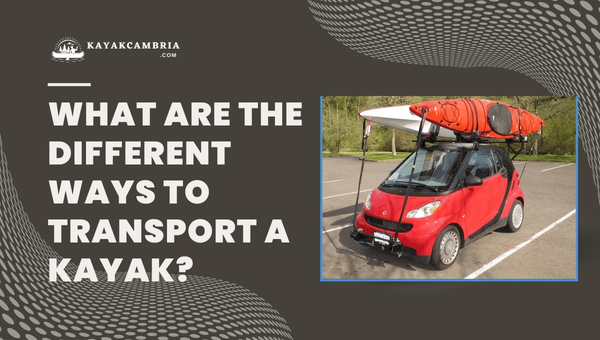
- Stacker: This is the simplest and most common way to load a kayak onto a roof rack. This method is used for transporting kayaks vertically. It is useful for small kayaks and is usually done with the help of a stacker bar.
- J Rack: This is the most popular option for transporting a kayak since it’s easy to install and offers a secure way of tying your kayak down. It is a J-shaped carrier that mounts onto your roof and has straps with buckles to hold the kayak in place.
- Crossbars: If your vehicle has side rails, you can purchase a set of crossbars that attach to the rails and then strap the kayak onto the bars. This is a great way to secure the kayak while keeping it off your roof.
- Rack Saddles: Rack saddles are also known as crossbars and provide a secure way of transporting a kayak without having to use any straps or rope. They simply hook over the sides of your vehicle’s roof rack, creating an effective cradle for the kayak to be secured in.
- Rollers: Rollers are designed to make transporting a kayak easier by providing an easy way of loading the kayak onto the roof rack. The roller attaches to the end of your vehicle’s roof rack and allows you to simply slide the kayak up onto it.
12 Best Ways To Transport A Kayak Without A Roof Rack
The kayak can be transported without a roof rack can be done in a variety of ways, depending on the size and weight of your kayak. Below are some of the best ways to transport your kayak without a roof rack:
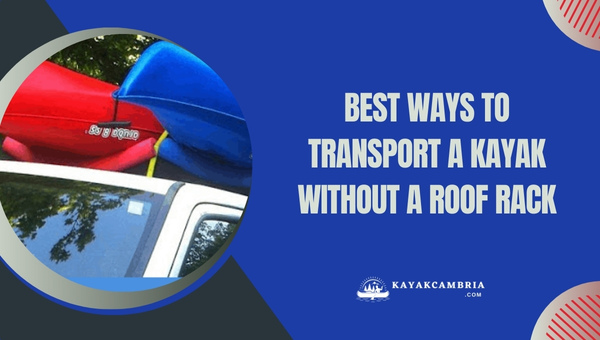
1. Inside The Car
If you don’t have a roof rack, one option for transporting a kayak is by using your car. Please note that this method may not be suitable for all car types. However, it is worth considering if you need to move your kayak but don’t have a roof rack. In case you have a small SUV with a hatchback window that opens, you can transport the kayak by letting it stick out of the back.

Though it is not a great choice, you can consider putting the kayak inside the car if there are no other alternatives and you have other passengers with you. To fit the kayak in a smaller car, fold down the back seat and push up the front passenger seat.
Then, place the kayak through the trunk. Smaller and shorter kayaks can fit inside the car this way. To keep your seats clean and dry, consider using a foldable kayak or an inflatable kayak that can fit inside any car.
2. Pool Noodles
Pool noodles are a cheap and easy option for transporting your kayak without a roof rack. To transport a kayak on the roof of your car, take two full-sized pool noodles and run straps through the hole in the center of each noodle. Make sure to choose thick noodles for better stability. Then, strap the noodles to the roof of your car and place the kayak on top.

You can secure the kayak using cam or ratchet straps. Cut the pool noodles to match the width of your car and place them on the roof. Then, place the kayak on top and strap it down. The pressure from the straps will keep the pool noodles in place.
One disadvantage of using this method is that the pool noodles rest on the roof of your car, which puts all of the kayak’s weight on the car’s body. Furthermore, the pool noodles will eventually become compressed, causing your padding to wear out after one or two seasons.
3. Foam Blocks
Foam blocks are a great way to transport a kayak without the need for a roof rack. You need to get two foam blocks, one for the bow and one for the stern, which you can attach to the roof of your vehicle using straps. It comes in different sizes and shapes and can be used for transporting kayaks of almost any size. The curved and V-shape blocks are the best options for transporting kayaks.
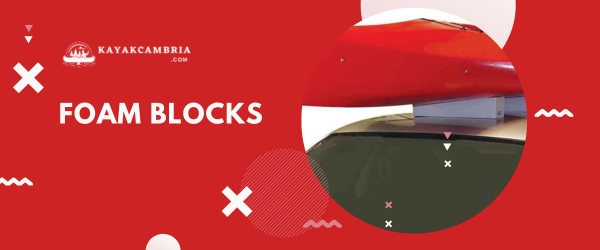
The long and wide foam blocks are best suited for transporting kayaks. You can do it by placing foam blocks along the length of the kayak and then putting the kayak in the middle of them. After that, use straps to tie the kayak down and make sure that it’s secure.
4. Kayak Trailer
Kayak trailers are a costly but effective way to transport your boat, especially when carrying multiple kayaks. They are designed to sit closer to the ground than a car-top carrier, making loading and unloading gear more convenient.
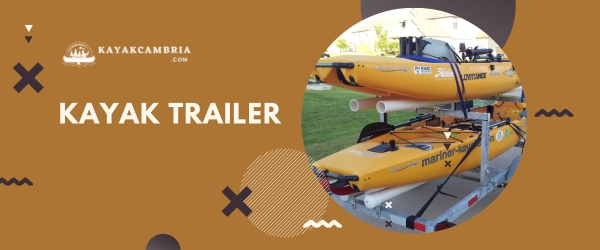
One disadvantage of owning a trailer is that you require sufficient parking space at home as well as at your destination for launch. However, sports trailers are lightweight and compact enough to fit in your garage or backyard for storage.
The trailer is designed for hauling and can carry more weight than your car’s roof can handle. It may take some time to adjust to driving with the trailer, but it eliminates the need to lift the kayak overhead for mounting as you can mount it directly on the trailer.
5. Folding Kayak
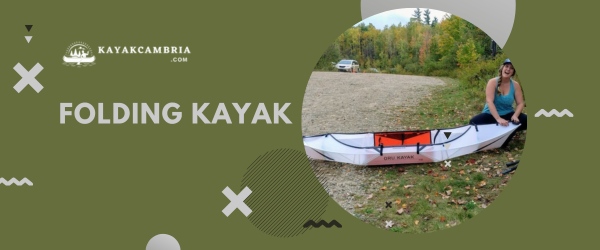
To make transporting a kayak easier, you can opt for a foldable or inflatable kayak. These are lightweight and much smaller than the traditional hard-shell kayaks, which makes transportation easier. They come with carrying bags that help secure them in place and prevent any damage during transport.
Folding/inflatable kayaks are ideal if you are traveling long distances and don’t have a lot of space. Furthermore, these kayaks can be stored in small spaces such as closets or under the bed when not in use.
6. Truck Bed Extender
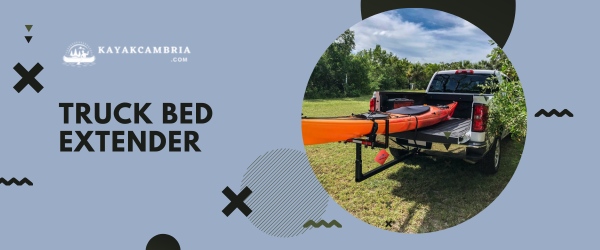
A truck bed extender is a great alternative to transport your kayak. It acts as an extension of the pickup truck’s bed allowing you to carry more cargo. Some truck bed extenders have adjustable arms that can be moved and secured for carrying oversized items such as kayaks.
The adjustable arms allow you to strap down and secure the kayak firmly on the bed extender, preventing it from shifting or sliding while driving. As a bonus, some truck bed extenders also feature a built-in ramp for easy loading and unloading of kayaks. This is a great solution if you have to transport more than one boat at a time.
7. Gym Mats
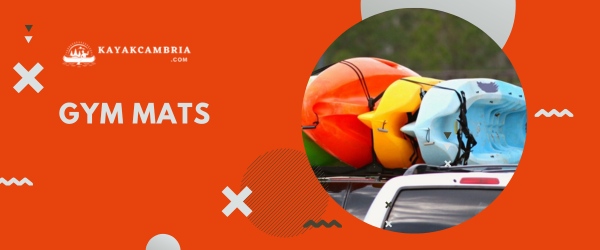
Another creative way to transport a kayak without a roof rack is by using gym mats. Place the mat on top of your car and then place the kayak on it. Be sure to secure the kayak with straps so it cannot move during transportation.
This method will prevent any scratches or dents from occurring on your vehicle’s roof, as well as being cost-effective. However, this method is not recommended for longer trips or if you have to transport multiple kayaks. Additionally, make sure the mats are clean and dry before placing them on your car to avoid any unwanted mess.
8. Foam Camping Pads Or Sleeping Pads

Foam camping pads or sleeping pads are great options for transporting a kayak without a roof rack. Not only are they lightweight and easy to carry, but they also provide greater protection than other methods of transportation.
Sleeping pads can be strapped onto the top of your car with the help of ratchet straps. Then you can place the kayak over it and secure it with the straps. This is a great way to transport your kayak without having to worry about scratching or damaging your car’s roof.
9. Rolled-Up Towels And Blankets

If you are planning a short trip and have no way of transporting the kayak, rolled-up towels or blankets can help. Place the rolled towels or blankets on the sides of the kayak to act as cushions and grip points for your hands when carrying it.
Make sure that your rollers are thick enough so that they won’t slip out of your hand. To make the job easier, you can also have someone help you carry it by holding onto the other end. This is an economical and temporary way to transport a kayak without a roof rack.
10. Inflatable Roof Rack
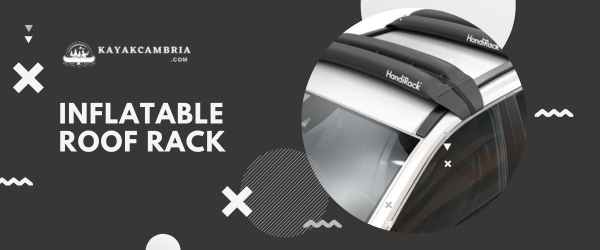
Inflatable roof racks are a great alternative to car-top carriers as they are lightweight and cost-effective. They come with adjustable straps that can be easily attached to most vehicles’ roofs and provide a secure place for your kayak.
The inflatable rack is simple to set up and easy to store when not in use, making it ideal for those who may not have a roof rack permanently installed. It provides more padding and cushioning to protect your kayak from damage, and can also be used for other types of cargo. This is a great option if you need to transport your kayak temporarily.
11. DIY Kayak Roof Rack
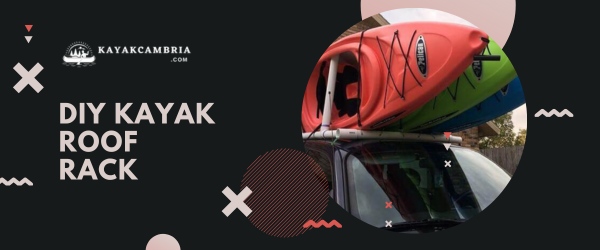
This method is suitable for those who don’t have access to a roof rack or trailer. You can create your roof rack by using pool noodles. You can use the noodles to create a cradle that will support your kayak.
This method is cheap and simple, however, you should ensure that your vehicle is powerful enough for hauling the extra weight of the kayak. Additionally, confirm that your roof can take the weight of the paddles as well.
12. PVC Pipes
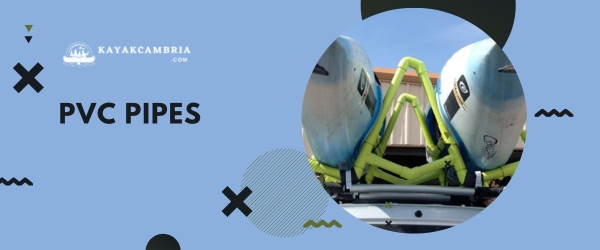
PVC pipes are the most inexpensive and easiest way to transport a kayak without a roof rack. You just need a few pieces of PVC pipe, which are easy to find in hardware stores. Cut two pieces according to the length of your car’s door frame, and then secure them tightly with rope or bungee cords. Make sure that the pipes do not move while you are driving.
The PVC pipes should be placed on the roof of your car and then tie down the kayak securely with rope or bungee cords. This method is best for short-distance trips as it can cause some damage to your car over time if used too often. It is also not suitable for carrying more than one kayak. If you have a truck or SUV, however, it can be used to carry multiple kayaks at once.
How To Transport A Kayak Without A Roof Rack?
There are several options available that can help you transport your kayak without a roof rack. Whether it is a short trip or a longer excursion, these methods can provide a secure and cost-effective way to get your kayak where it needs to go.
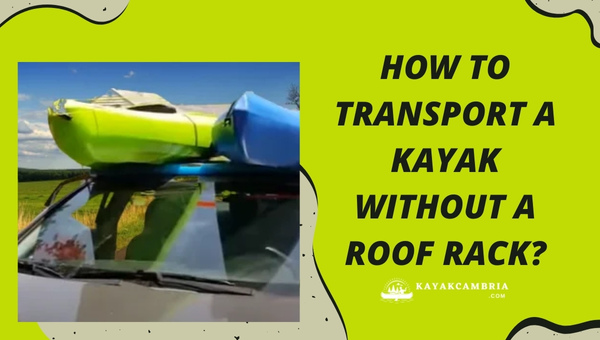
What Will You Need?
There are only two things you will need to transport a kayak without a roof rack:
- Pool Noodles: Pool noodles can be used to create a cradle for your kayak and provide cushioning.
- Ratchet Straps: Ratchet straps are necessary to secure the kayak to your car’s roof or inflatable rack.
Step-By-Step Guide To Transport A Kayak Without A Roof Rack
We are here to discuss the step-by-step guide to transporting a kayak without a roof rack:
1. Place And Fasten The Pool Noodles On Your Car

To begin, make sure the pool noodles fit well on the car roof. They should align with the sides of the car without protruding. If they stick out too much, trim them accordingly. When you have the right size noodles, lay them across the car roof. Place the pool noodles on your vehicle’s roof, spacing them about three feet apart.
Be sure to position one in the center and one at both the front and back, adjusting the distance as needed for your roof size. Then, insert a ratchet strap through the hole in the center of each pool noodle and pass it inside the car through the open doors. Finally, fasten the straps to secure the items in place.
2. Pick Up Your Kayak And Position It Over The Pool Noodles
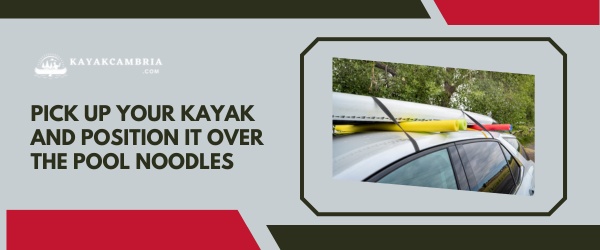
The next step is to pick up your kayak and place it over the pool noodles. After securing the pool noodles in place, carefully lift your kayak and position it over the noodles. First, turn your kayak over so that the cockpit faces downwards. The center of the kayak should be resting on the central pool noodle. Ensure that the hull is resting on the noodles and that the kayak is facing the correct way up.
To stabilize your kayak and prevent it from moving side to side, place it upside-down on the roof of your car. Once the kayak is resting on the secured pool noodles, you can adjust them by lifting any part of the kayak to make sure they are parallel with each other. Make sure to position the kayak perpendicular to the pool noodles with the bow or stern facing the direction your car will be traveling.
3. Secure The Kayak With Straps

Once you have your kayak positioned correctly, it’s time to secure it. Use ratchet straps or bungee cords to keep the kayak in place and prevent it from shifting during transport. Start by tying down the bow and stern of the kayak first, then work your way towards the center, tying each side in turn.
Make sure to use straps that are long enough for your car and kayak, so that the straps can be tightened securely. Pull each strap tight by using a ratcheting motion or repeatedly pulling until the straps are snug.
4. Tie The Bow And Stern Of The Kayak

Once you have secured the sides, it’s time to tie down the bow and stern of your kayak. Using a sturdy rope or bungee cords, secure each end of the kayak firmly so that it does not move during transport. This will prevent any damage from occurring to your car over time. To secure the kayak, pass the straps through both the front and back carry handles or toggles.
Then, use ratchet straps to tie them down to a tie-down spot located beneath your car. To do it, you can use a carabiner or hook. In case you have a towbar at the back, it can also serve as a good spot to secure your tie down or ratchet strap. Make sure to pull the straps tight and check each connection frequently.
Be Cautious Of Roof Damage
When transporting a kayak without a roof rack, it is important to be aware of the potential for damage to your car’s roof. To avoid any damage, make sure that the straps are secure and tight, and check them regularly throughout your journey.
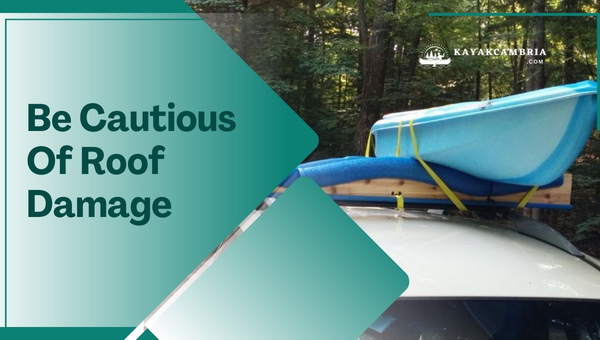
It is also a good idea to use foam or inflatable racks instead of ratchet straps to secure your kayak. This will minimize the risk of any long-term damage to your car’s roof, ensuring that you can enjoy your adventure with the peace of mind.
No matter what method you choose for transporting a kayak, being aware of potential hazards is key. Be sure to inspect both your vehicle and the kayak before and after transport, to ensure that there has been no damage.
How To Secure A Kayak Without A Roof Rack?
When it comes to transporting your kayak without a roof rack, using pool noodles and ratchet straps is a great solution. But it is important to tie down your kayak correctly and check the straps regularly to prevent any potential damage. If you leave the straps too loose or use the wrong type of straps, you may find yourself dealing with a damaged car roof.
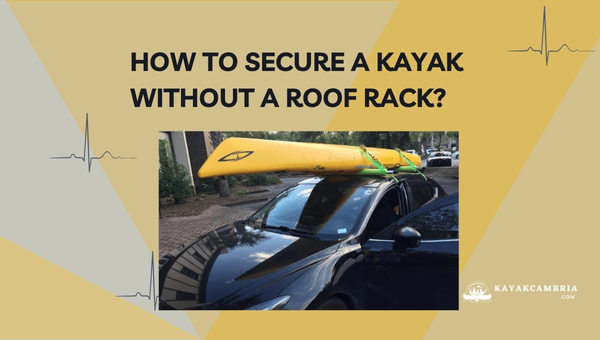
To do this, you need at least two straps, one for the bow and stern of the kayak, and one for each side. Make sure to use a sturdy rope or bungee cords to secure each end of the kayak firmly in place before using ratchet straps to tie them down securely.
If you do not have rails on your car, then you can run the straps through the windows or doorframes by connecting one end of the strap to the other end. Keep in mind that straps are only useful when they are tight, but do not strap them down too tight. With the right straps and a bit of patience, you can easily tie down your kayak without a roof rack.
How To Transport 2 Kayaks Without A Roof Rack?
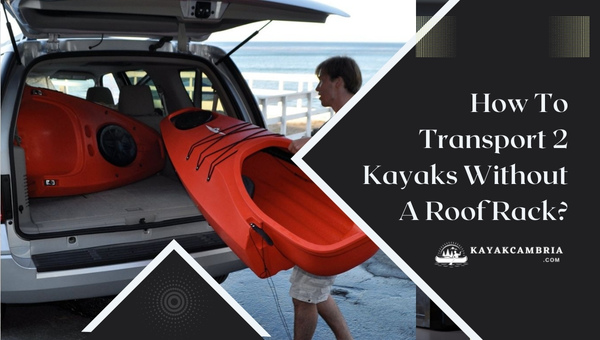
Transporting two kayaks without a roof rack is not as hard as it may seem. With the right tools and techniques, you can easily transport your kayaks safely and securely. The method is the same as when you’re transporting one kayak. The best way to transport two kayaks without a roof rack are:
1. Foam Blocks
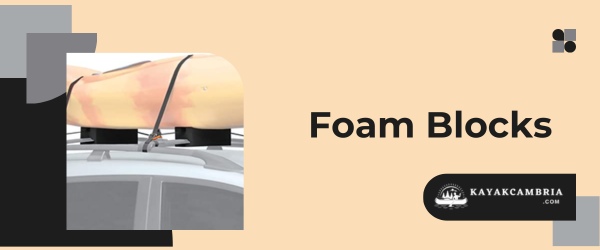
With two sets of foam blocks, you can secure your kayaks to the roof of your car. Place one set of foam blocks at each end of the kayaks and then secure them with ratchet straps or rope.
2. Pool Noodles

You can use pool noodles to create a cushion between the kayak and your car roof, which will help protect it from any damage during transport. You can have two more pool noodles and straps to secure the second kayak.
3. Inflatable Kayak Rack
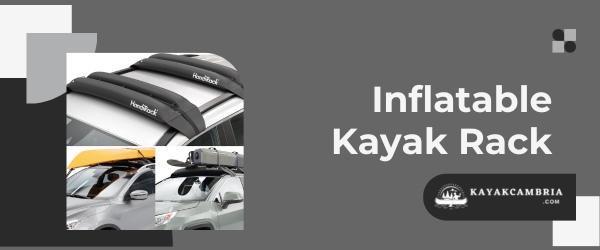
This method involves using an inflatable kayak rack, which is designed to hold two kayaks securely. To use this method, you need to attach the kayak rack to your roof and then secure the kayaks in place with ratchet straps.
4. Kayak Trailer

Kayak trailers are a great way to transport two kayaks without a roof rack. Not only are they sturdy and secure, but they also allow you to transport your kayak with ease. It is important to check the weight capacity of your trailer before loading the kayaks onto it.
Points To Remember When Transporting A Kayak
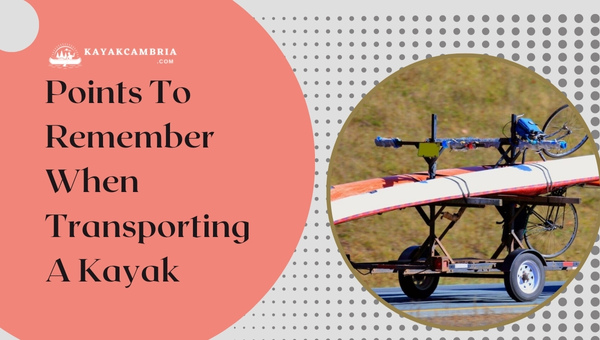
The main points to remember when transporting a kayak are:
- Price: It is important to consider the budget when looking for ways to transport your kayak without a kayak rack. There are different transportation methods and products available with a variety of pricing. If you have a limited budget, then you can look into more cost-effective options such as pool noodles and straps.
- Easy To Use: Make sure that the transportation method you choose is easy to use and understand. This will ensure that your kayak is safely secured during transport. The best option is to find a method that you can use with minimal effort. A trailer is a good option if you are looking for an easier transportation method.
- Number Of Kayaks: Depending on the number of kayaks you need to transport, you should look for the appropriate method. For example, if you need to transport two kayaks then an inflatable rack or trailer may be a better option than individual straps and pool noodles. If you want to buy a kayak but do not have a roof rack, then buying an inflatable kayak is recommended. So, always consider the number of kayaks that you need to transport before buying a product.
How Much Does A Roof Rack Cost?
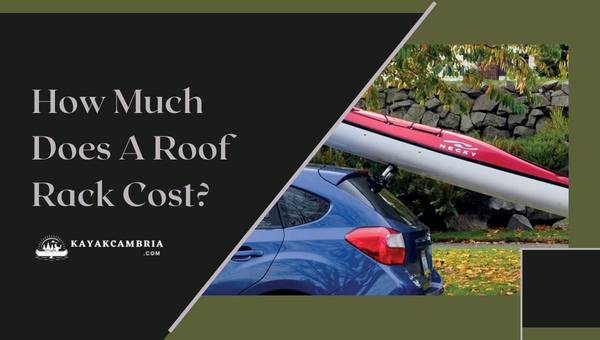
The cost of a roof rack depends on the type of vehicle you have, the size and weight capacity needed, and the materials used. It gets vary from a few hundred dollars to several thousand depending on the factors mentioned above. It is important to shop around and compare prices before purchasing so that you can get the best value for your money.
Frequently Asked Questions
1. Can I use straps to tie down my kayak without a roof rack?
Yes, you can use straps to securely attach your kayaks. It is important to make sure that the straps are tight but not too tight as this could damage your kayak.
2. How do I transport two kayaks without a roof rack?
The best way to transport two kayaks without a roof rack is by using foam blocks, pool noodles, an inflatable kayak rack, or a trailer.
3. How do you attach a kayak to a roof rack without crossbars?
The way to attach a kayak to a roof rack without crossbars is by using ratchet straps or rope to securely tie it down. Make sure the straps are tight but not too tight, as this could damage your kayak.
4. Is it necessary to have kayak racks?
Kayak racks are not always necessary, as you can transport your kayaks without them in some cases; however, they can make transporting and storing your kayaks much easier and more convenient.
Final Words
Transporting a kayak without a roof rack can be done with the help of a few different methods. You need to consider your budget and the number of kayaks you are transporting before choosing the best option for you.
There are some alternatives such as foam blocks, pool noodles, and an inflatable kayak rack that can help make transporting your kayak a breeze. We hope our article “How to transport a kayak without a roof rack” has provided you with the information and tips you need. Good luck!

